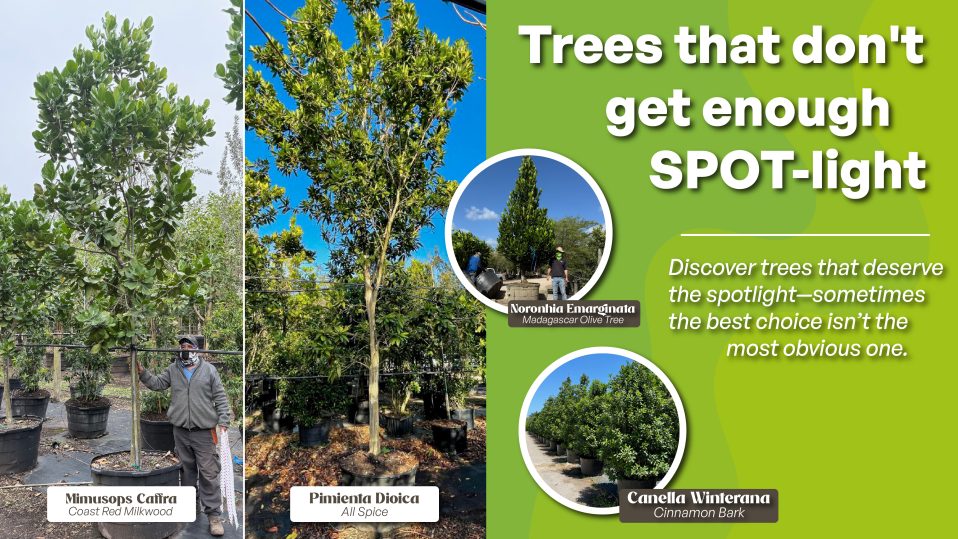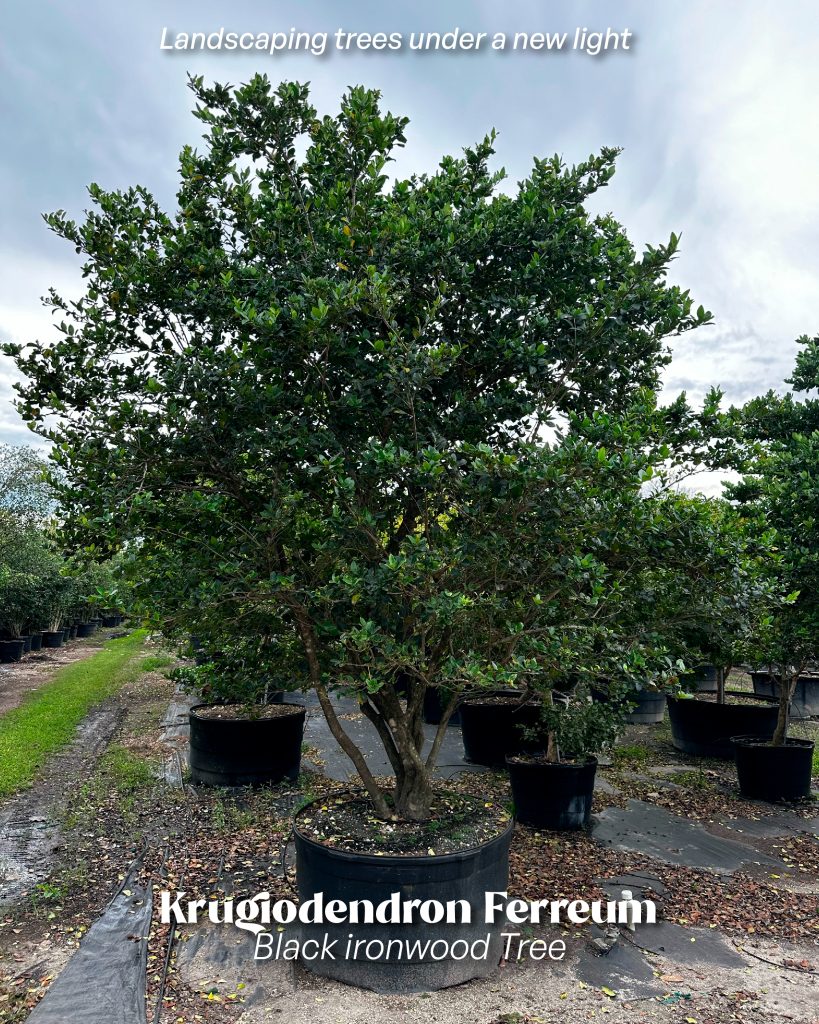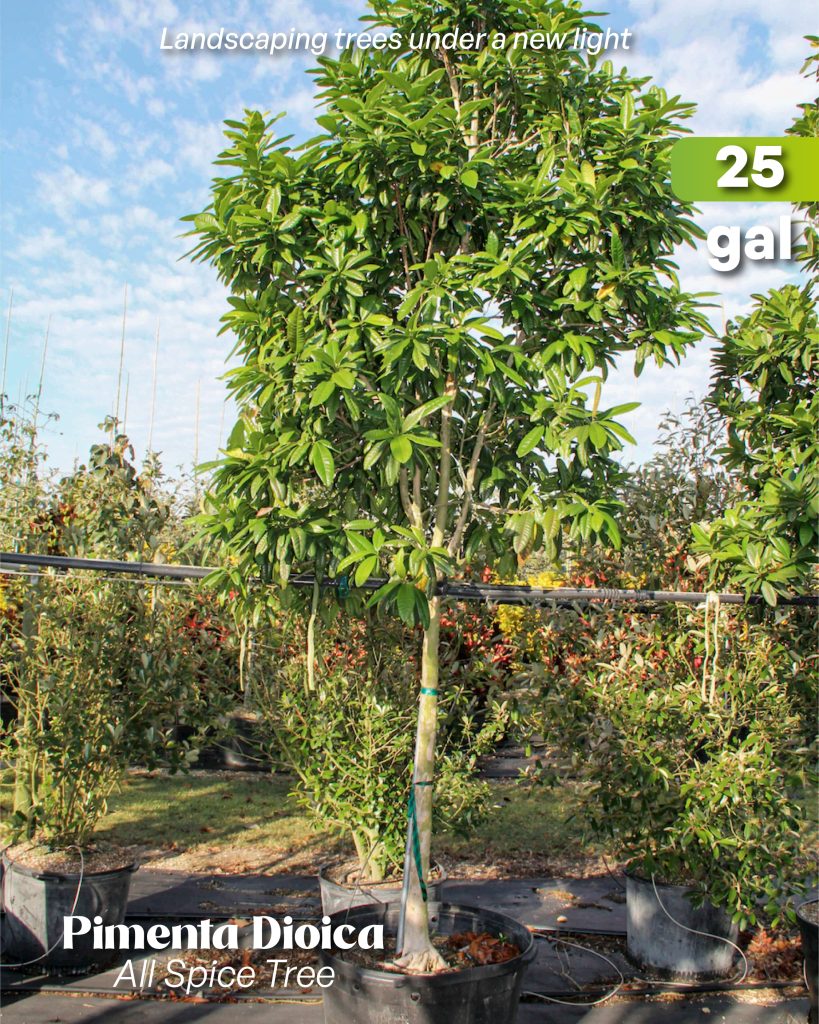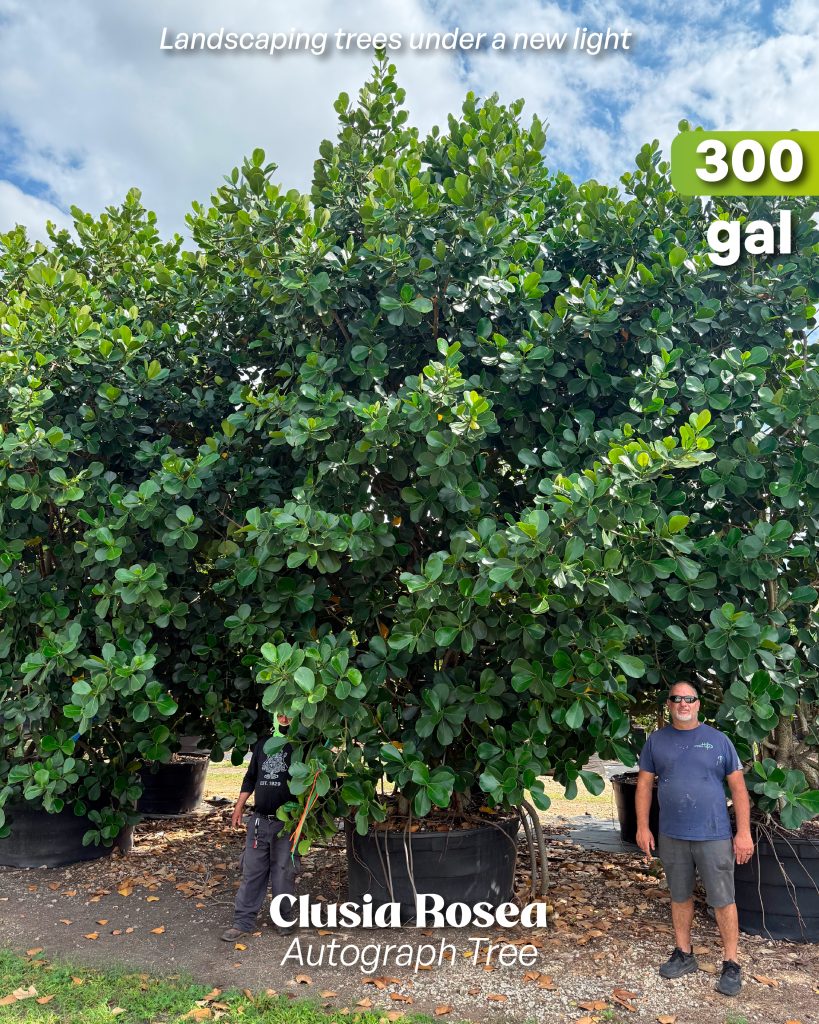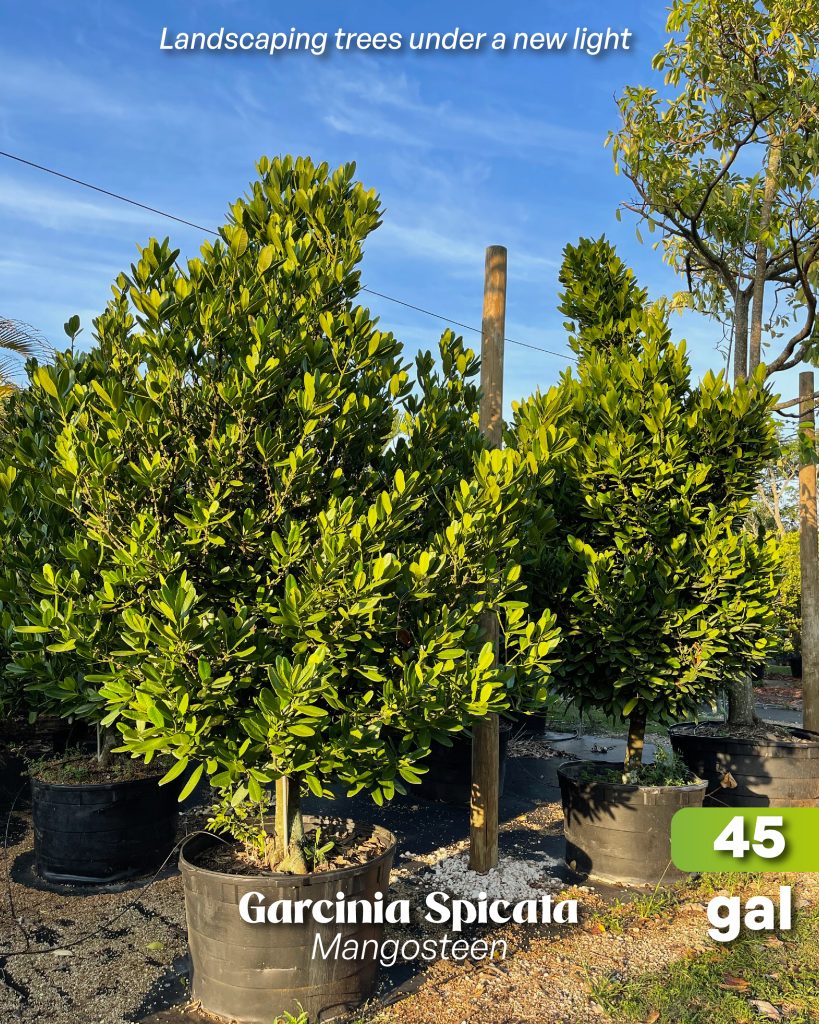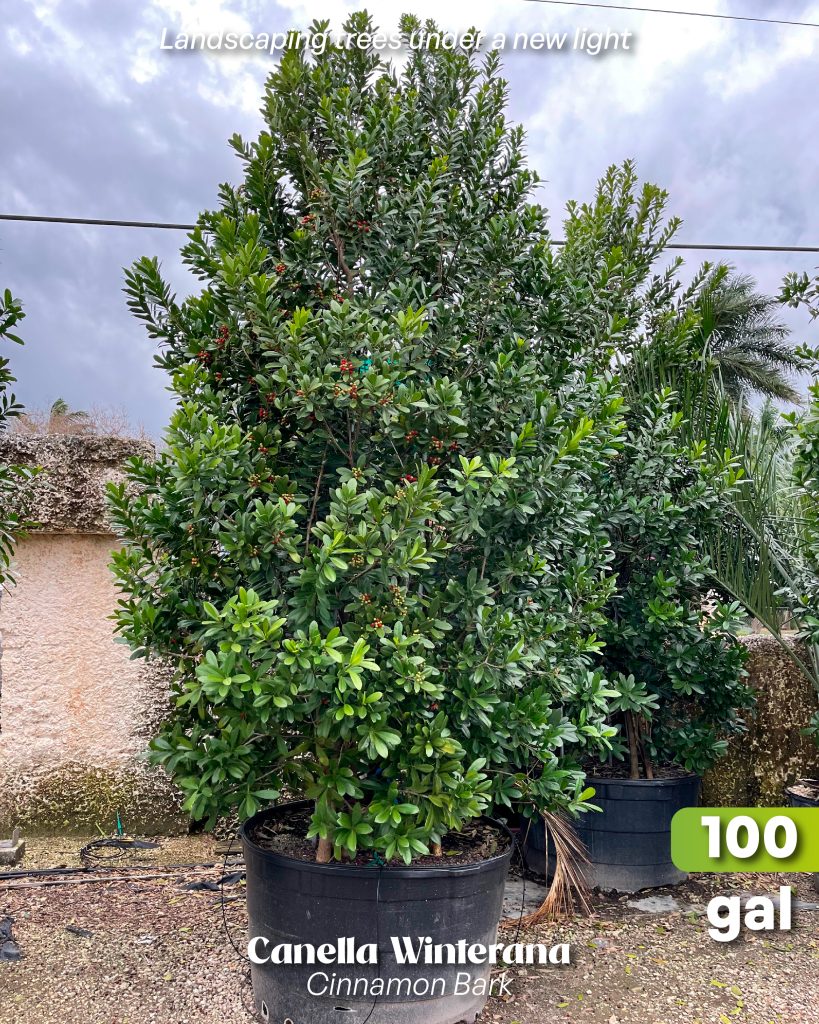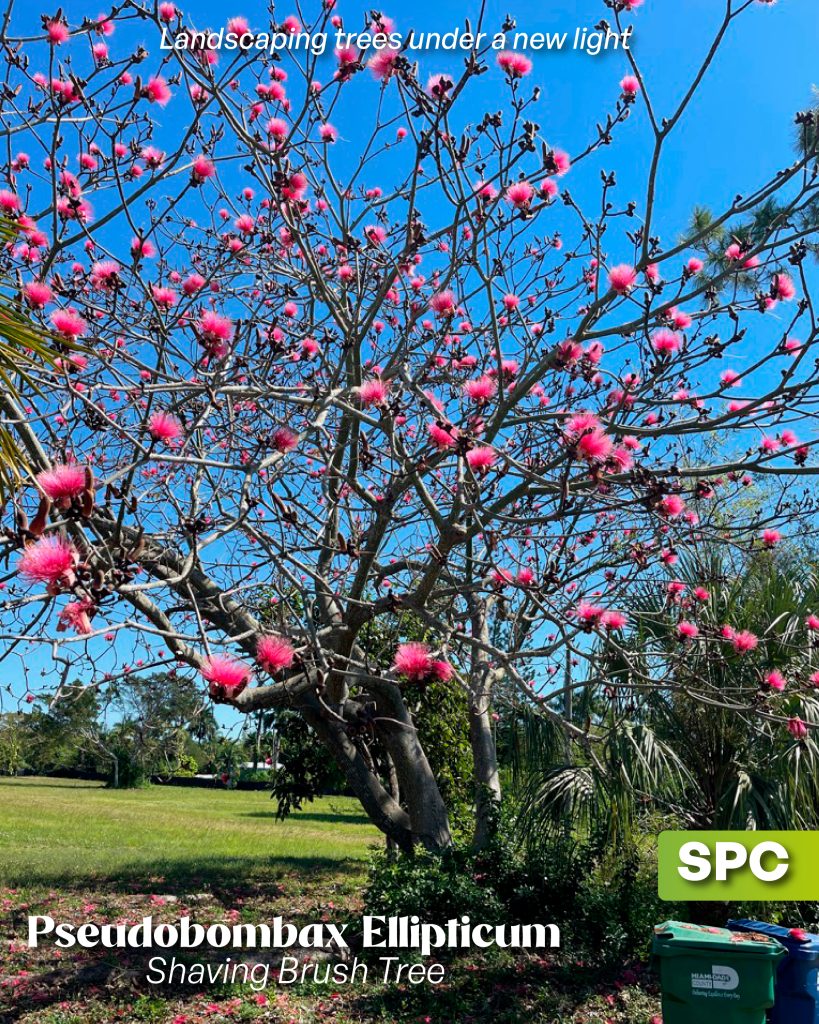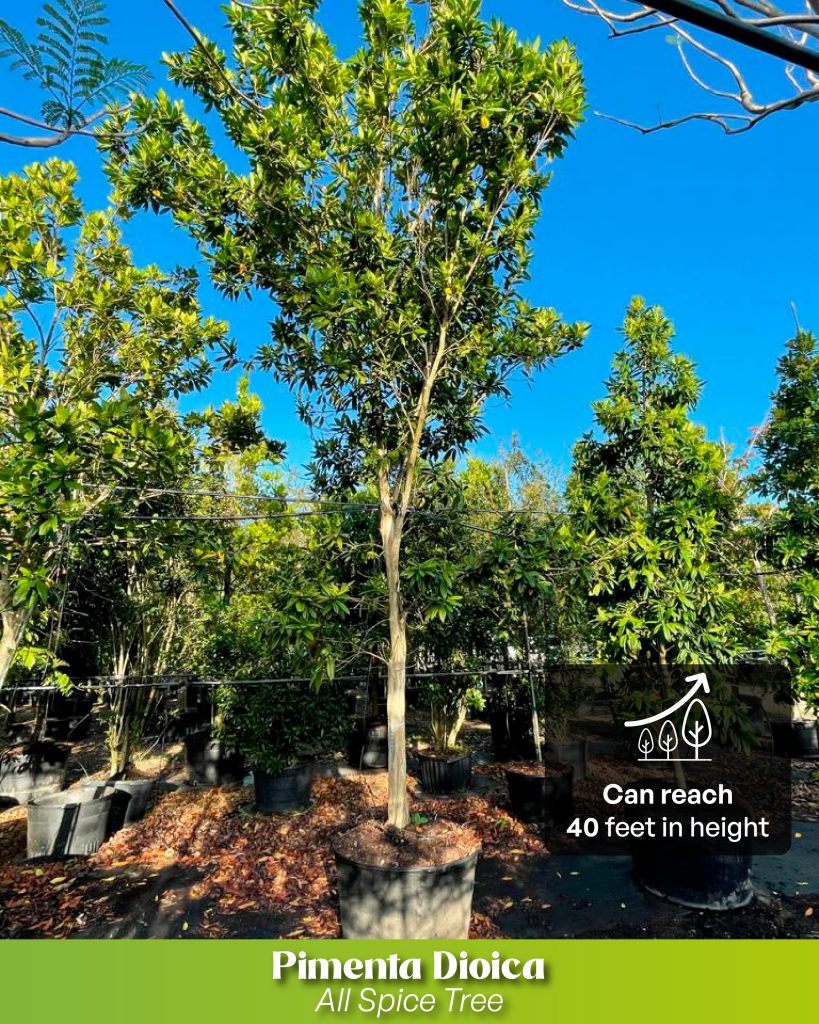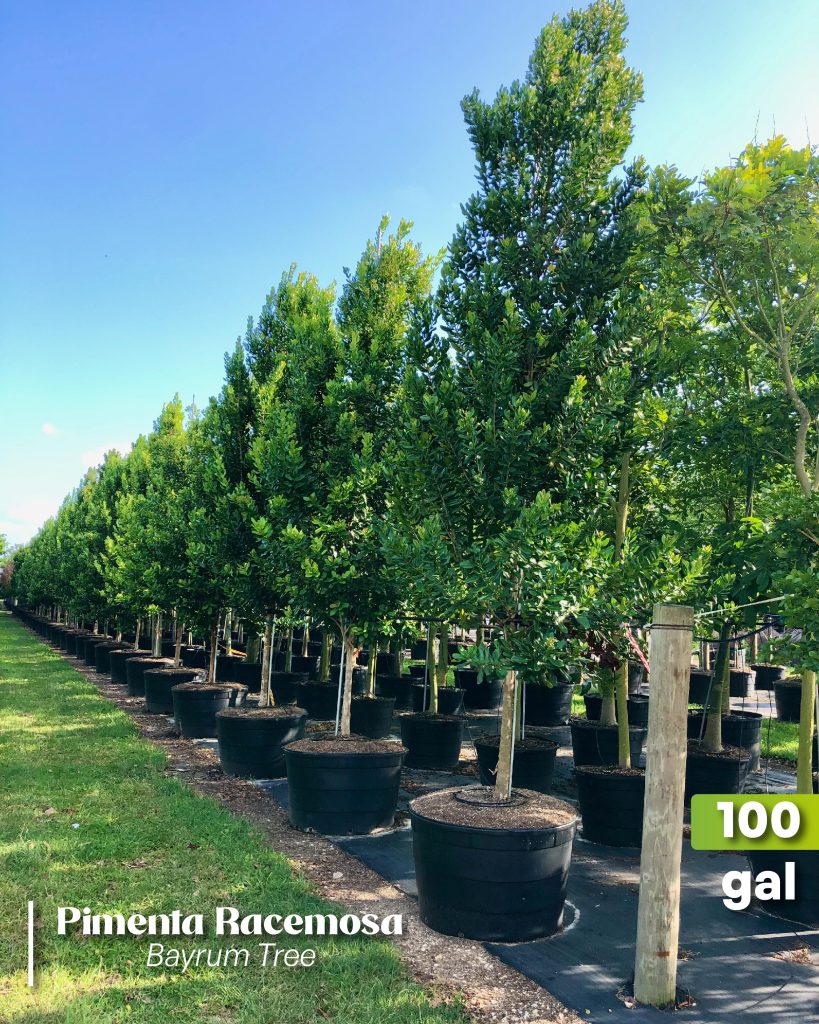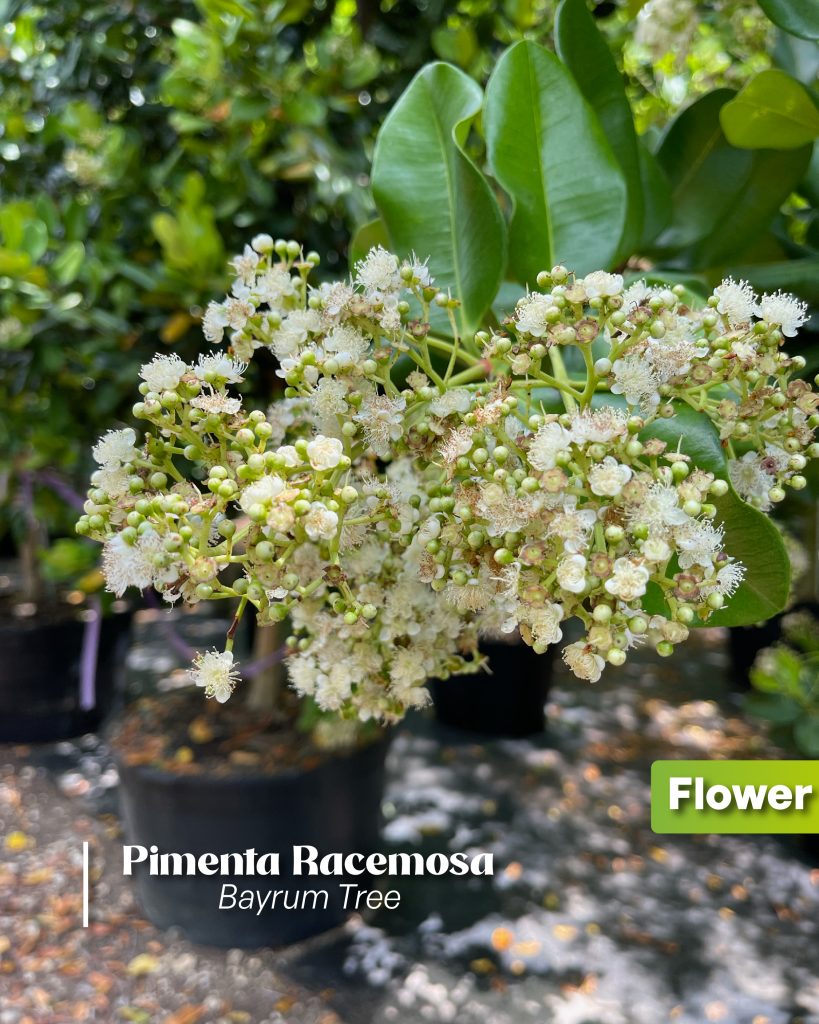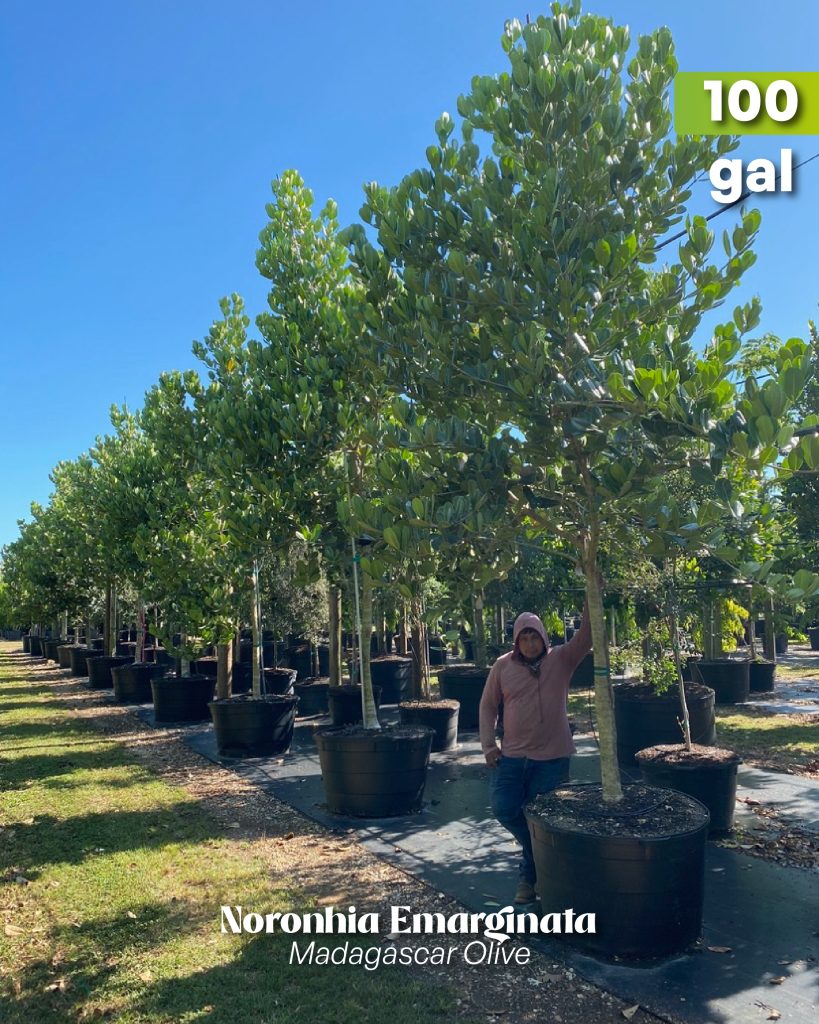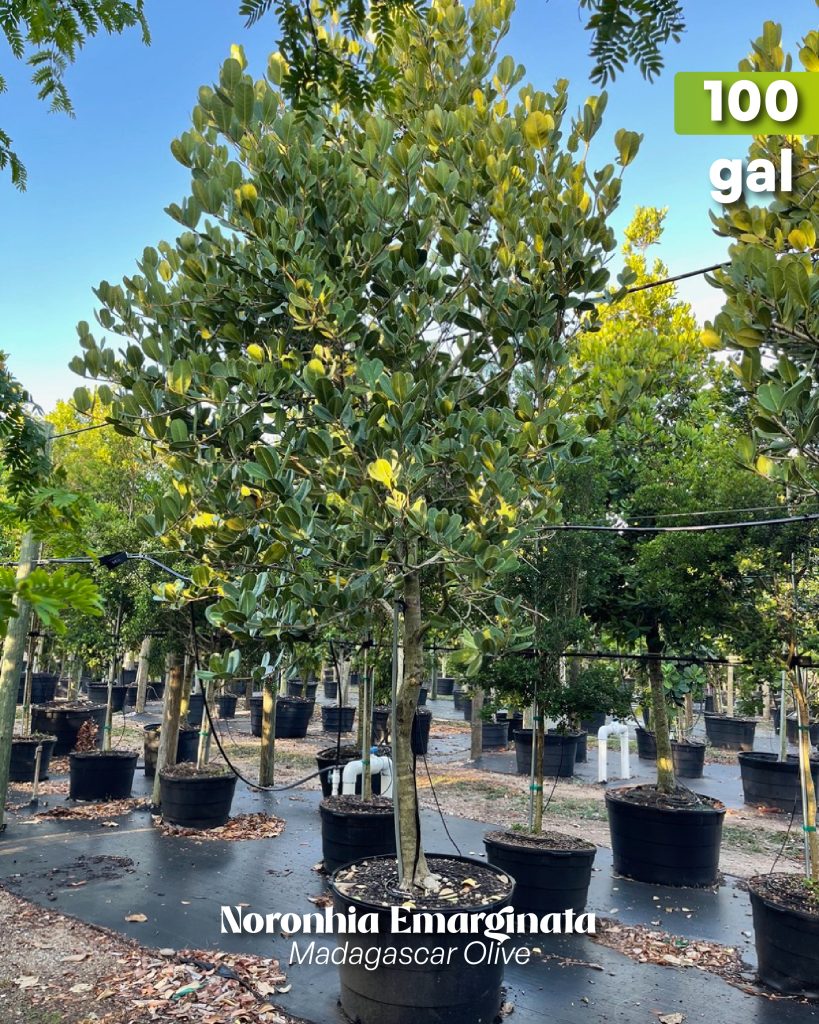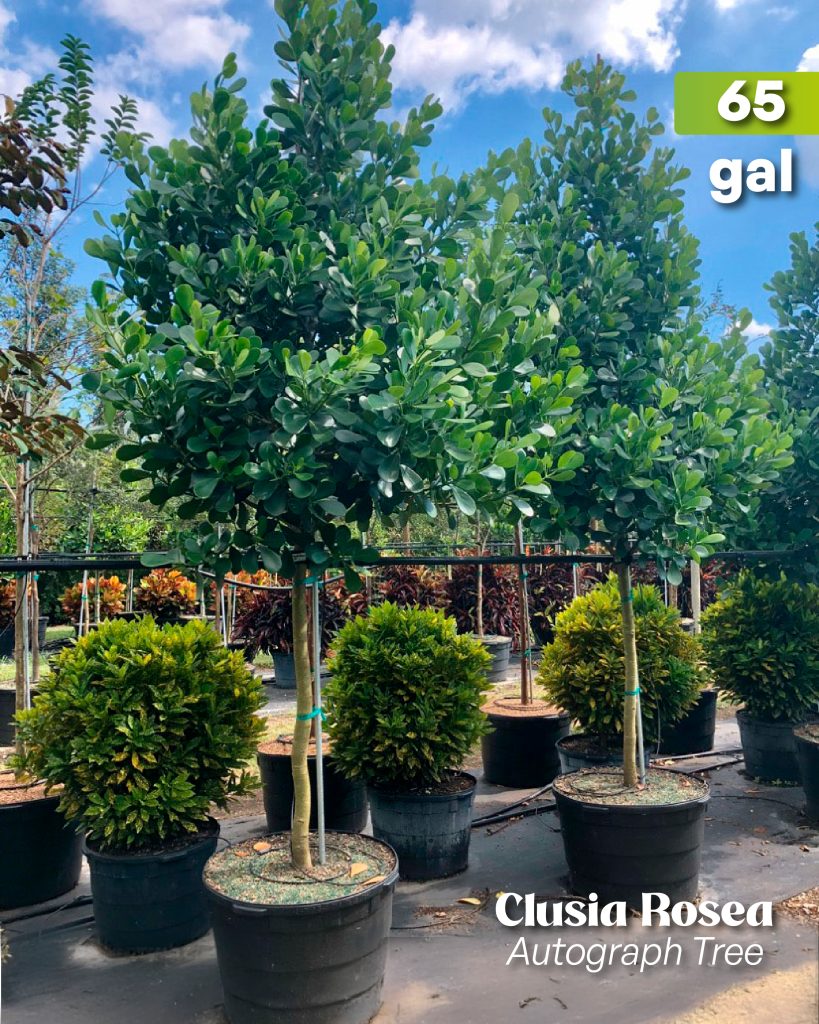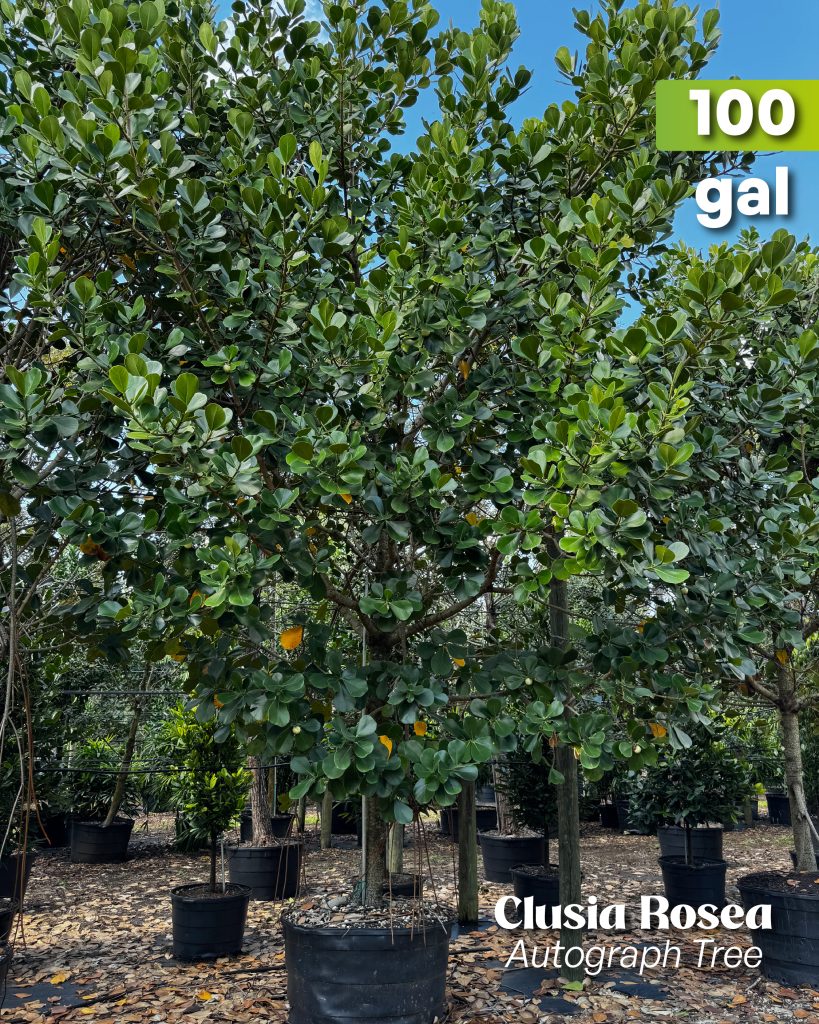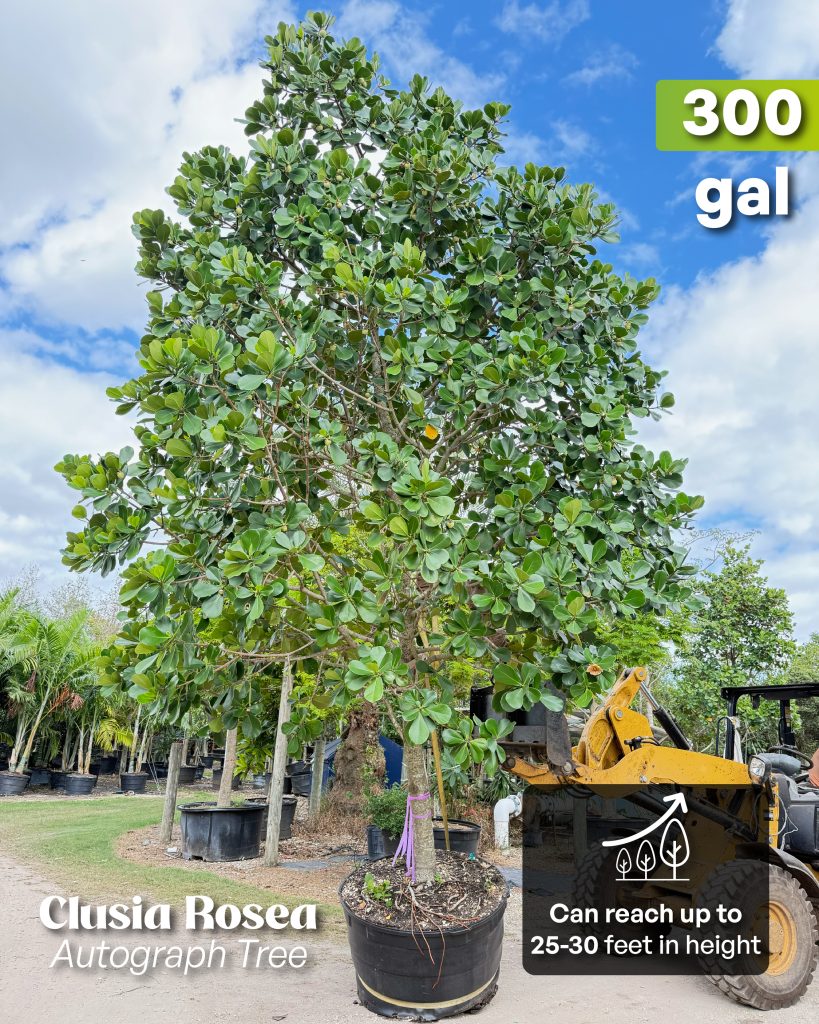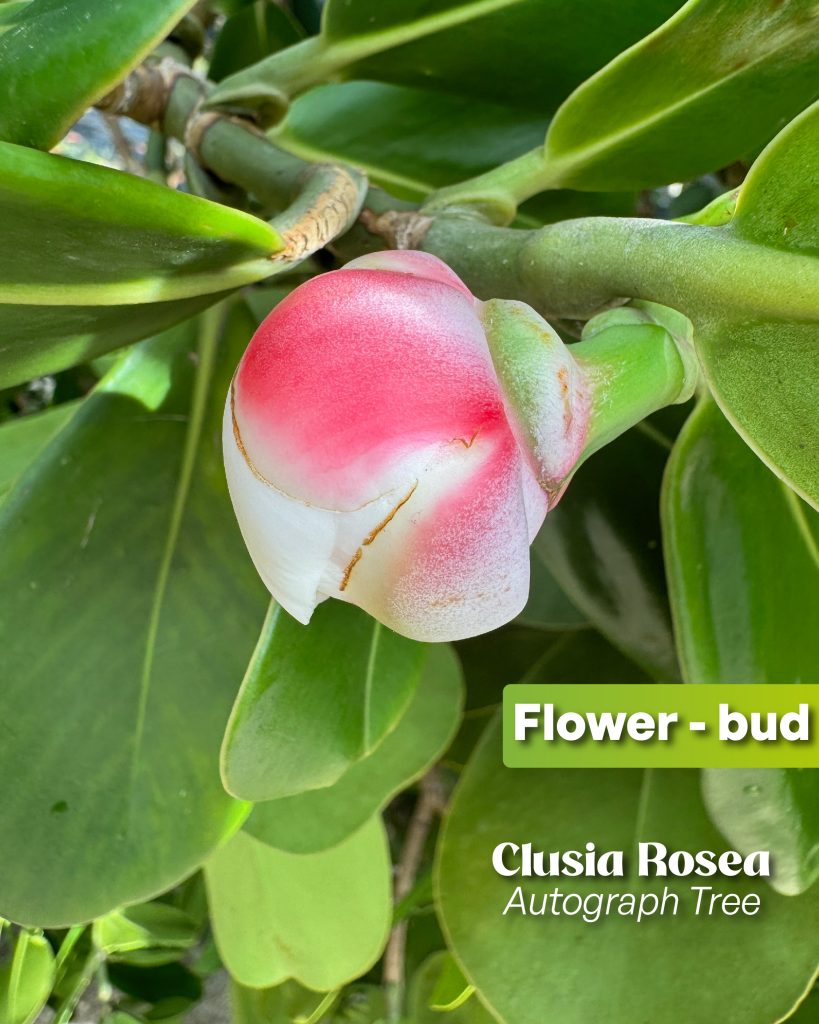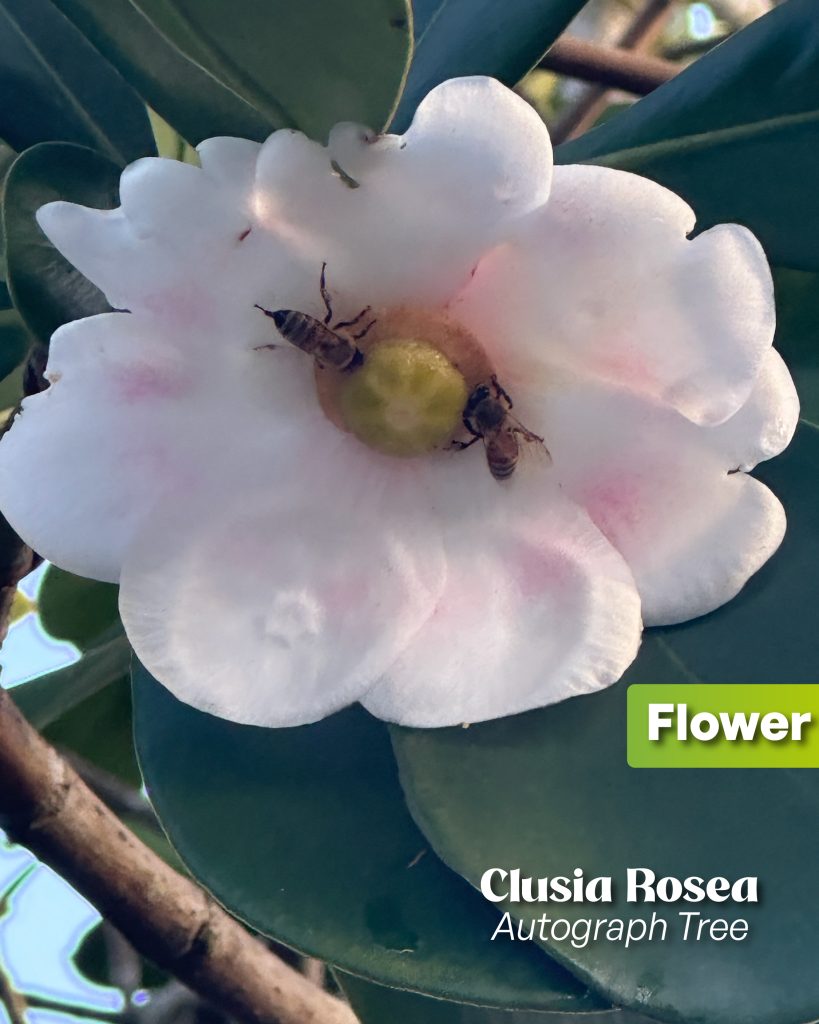We’re in the tree nursery business, and of course, we follow landscaping trends. But every now and then, curiosity gets the best of us—and we can’t help but ask: Are you truly choosing the best tree for your landscape project?
Some trees seem to fly under the radar, quietly doing their job while others steal the spotlight.
And at TreeWorld, we believe it’s time to shift that focus. We’re here to share the stage and invite you to take a second look—because sometimes, the best choice isn’t the most obvious one.
Landscaping Trees Under a New Light: Hidden Stars of Landscape Architecture Projects
Of course, we need to acknowledge that in the world of landscaping, certain trees steal the show—Live Oaks, Bridalveils, and Royal poincianas get a lot of the glory. But what about the quiet performers? The resilient, beautiful, and ecologically rich trees that rarely make it into center stage? This post is a tribute to those hidden gems. Whether you’re planning a garden, restoring a native habitat, or just love discovering new plants, here are some trees that absolutely deserve the spotlight in your landscape project.
More than spice! All Spice (Pimienta Dioica) in Landscape Projects
Allspice is widely known for its culinary use, but few realize that the tree behind the flavor is just as impressive. Native to the Caribbean and Central America, Pimenta dioica is a medium-sized tree that can reach up to 40 feet in height. It features a dense crown of ascending branches and ranges in shape from columnar to irregular, adding architectural interest to tropical landscapes and landscaping projects. The bark is pale brown and peels off in strips to reveal striking pink and ochre underbark making it visually appealing even when not in bloom.
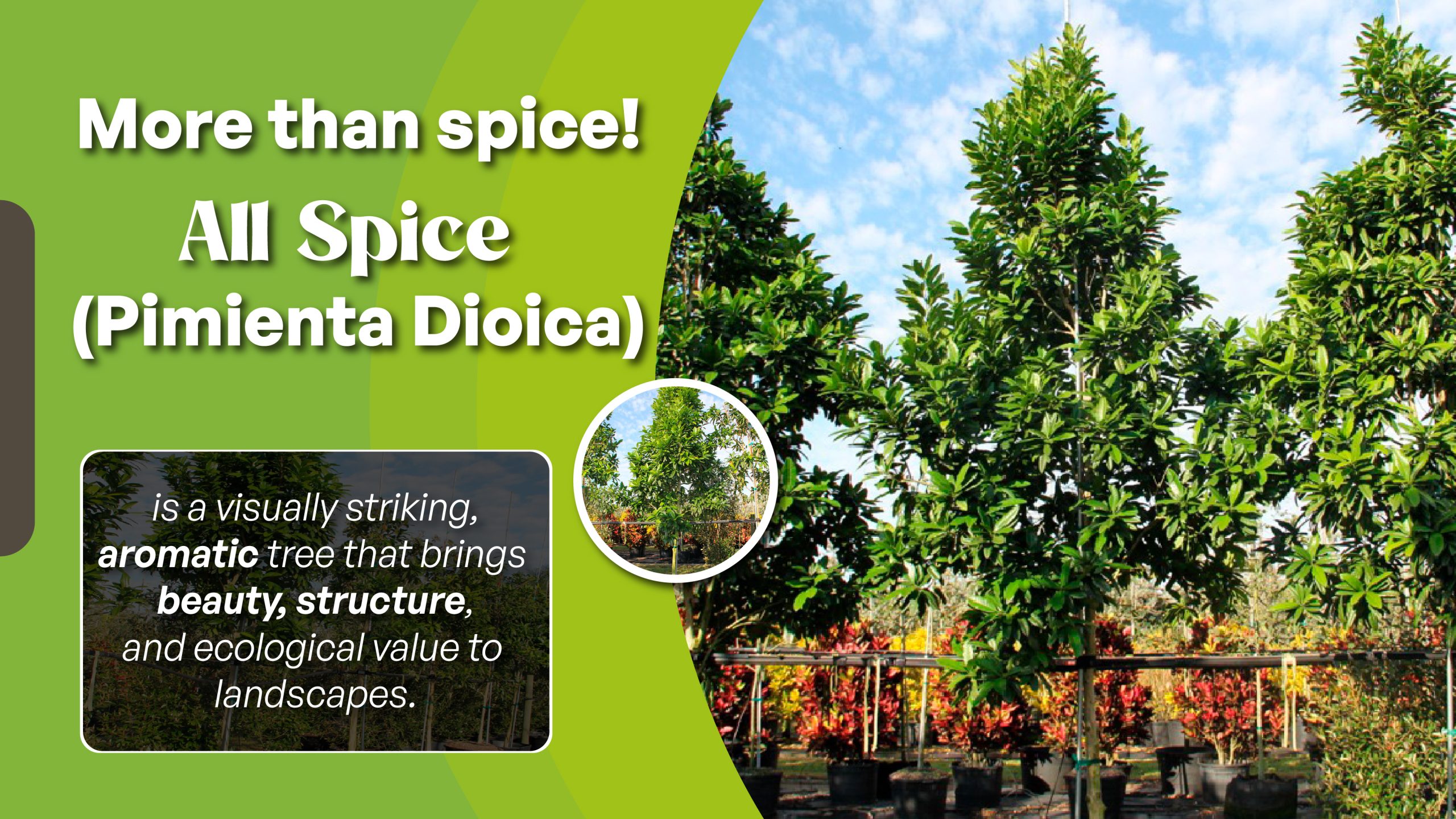
The dark green, leathery leaves can measure up to 8 inches long and are aromatic when crushed. Small, whitish flowers bloom in clusters from the leaf axils; they’re about 1/4 inch across and emit a sweet, spicy fragrance. Its fruit, a brown berry just slightly larger than a peppercorn, contains two seeds and is the source of the beloved allspice flavor. These berries are also used for propagation and attract birds, adding ecological value.
Choosing between the pimientas’?
If you’re thinking of featuring it in your upcoming landscape project, Pimenta dioica works beautifully as a specimen tree due to its elegant form and year-round interest. It also performs well in culinary or fragrant gardens, adding a sensory element to the landscape project.
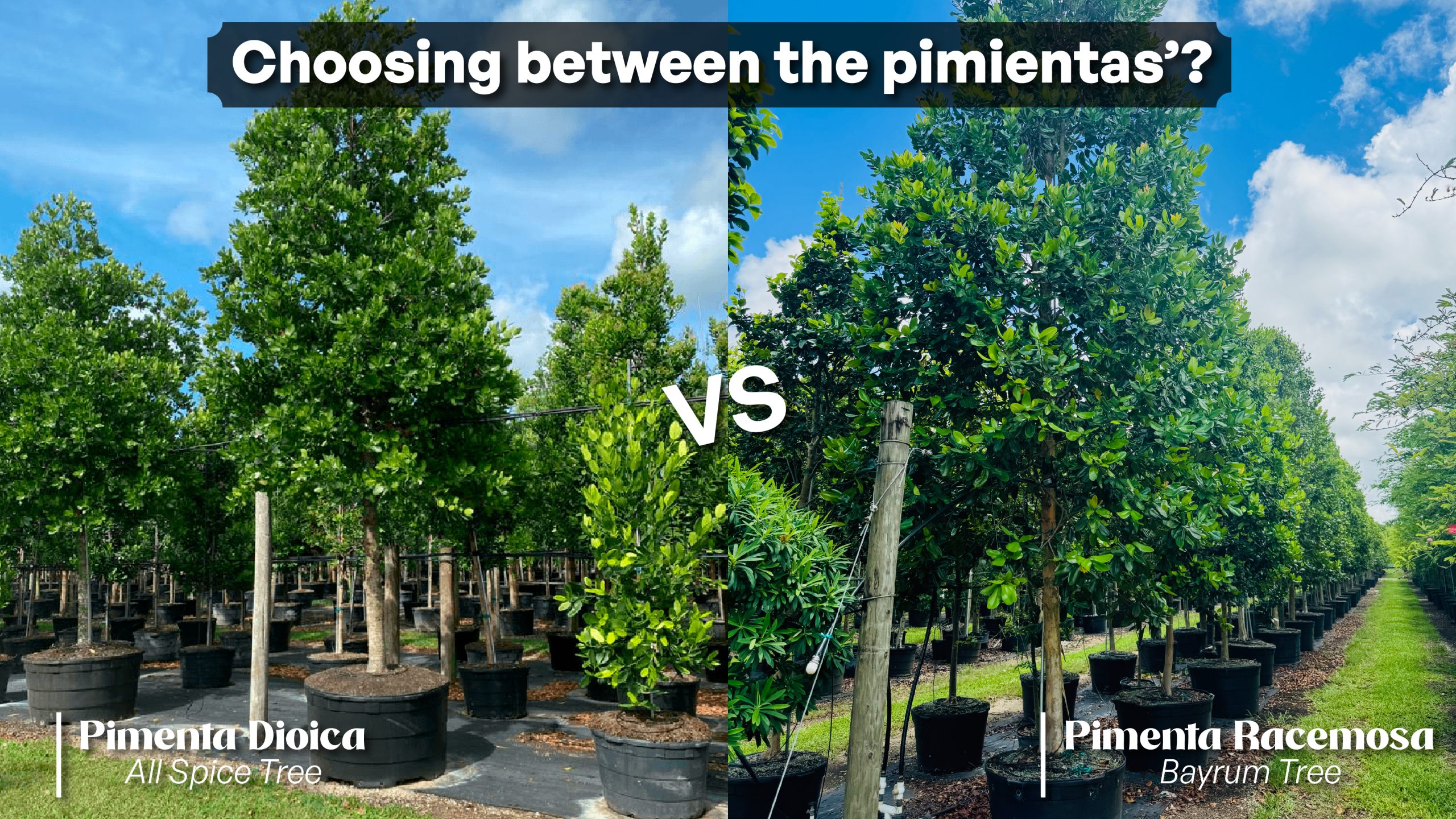
Plus, its relatively compact size and upright growth make it suitable near patios, entryways, or along walkways where its bark, scent, and seasonal flowers can be fully enjoyed. Sometimes it’s compared with the Bay Rum Tree (Pimenta racemosa), and of course, they share a lot of similarities. Both of these aromatic Caribbean natives belong to the Myrtaceae family, and while they share a similar vibe, they each bring something unique to the table.
Think of them as cousins: similar in charm, different in character. Whether you choose one or plant them together, they’ll add fragrance, beauty, and botanical richness to any tropical or subtropical landscape project.
A true landscape warrior: Norohnia emarginata (Madagascar Olive)
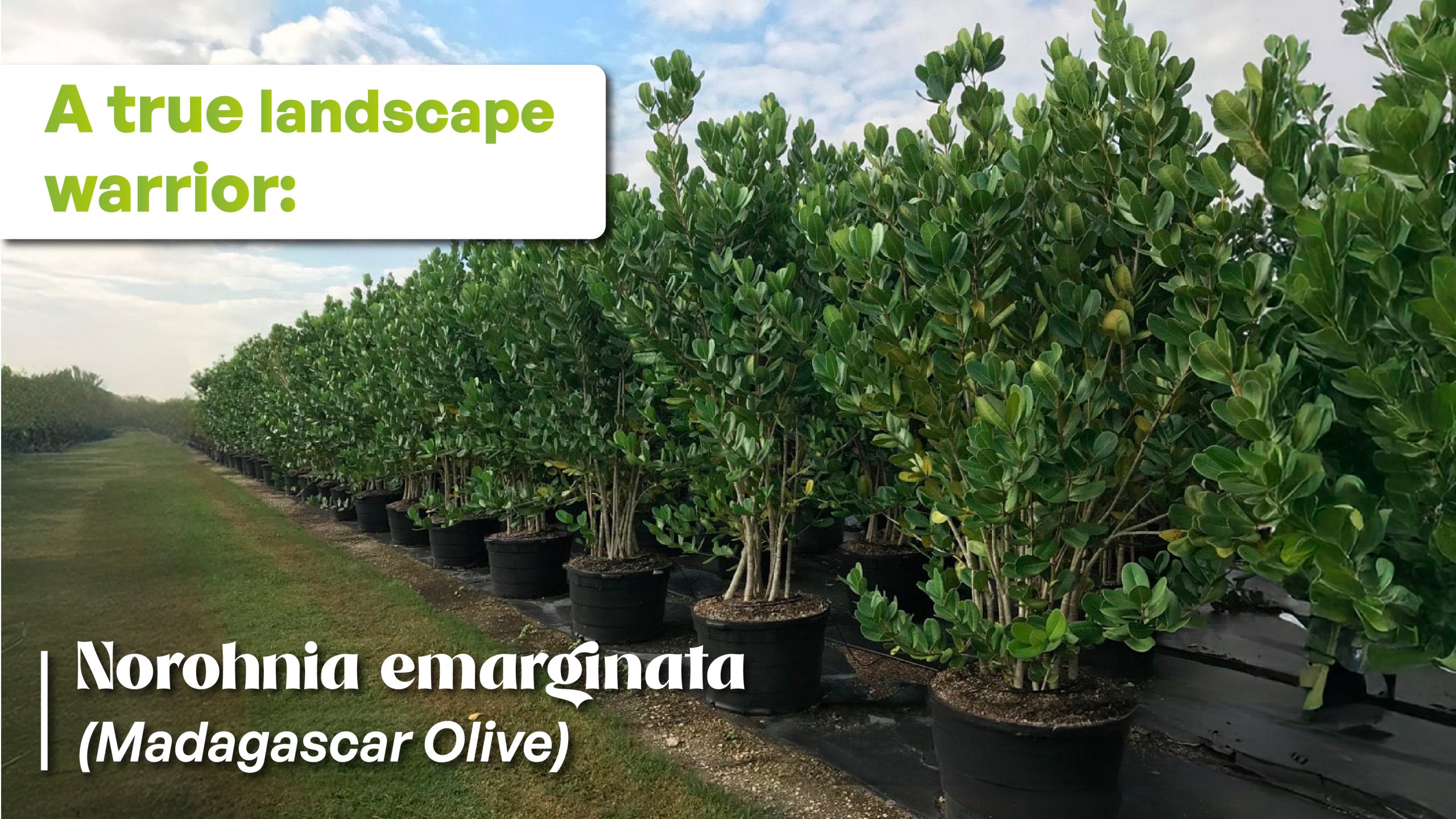
When it comes to standout trees for challenging landscapes projects, Noronhia emarginata, commonly known as Madagascar Olive, often flies under the radar. Yet this evergreen tree delivers well beyond expectations, especially in coastal and urban environments, making it a tree that truly goes the extra mile.
Built for the toughest Conditions the Madagascar Olive’s biggest strengths is its remarkable tolerance to salt and wind, making it a perfect choice for seaside properties. While many trees struggle in coastal exposure, they thrive. Its leathery, glossy green leaves remain lush and undisturbed, even when battered by salty sea spray. That resilience extends to urban conditions as well; enduring conditions like compact soil, air pollution, drought, and poor drainage.
Compact Yet Bold: Madagascar Olive in Landscaping Projects
Reaching a mature height of 20 to 25 feet and a spread of 15 to 20 feet, this tree fits beautifully into tight urban spaces, including narrow medians, parking lot islands, residential street tree pits, and small gardens. Despite its manageable size, the Madagascar Olive doesn’t shy out on visual interest. Its dense, upright oval to vase-shaped crown and smooth gray bark provide a sophisticated structure year-round. Plus, though its flowers are small and inconspicuous, they are delicately fragrant, adding a subtle sensory layer to gardens and patios. Plus, the bright yellow to dark purple fruit is not only ornamental but edible, with a sweet, creamy interior.
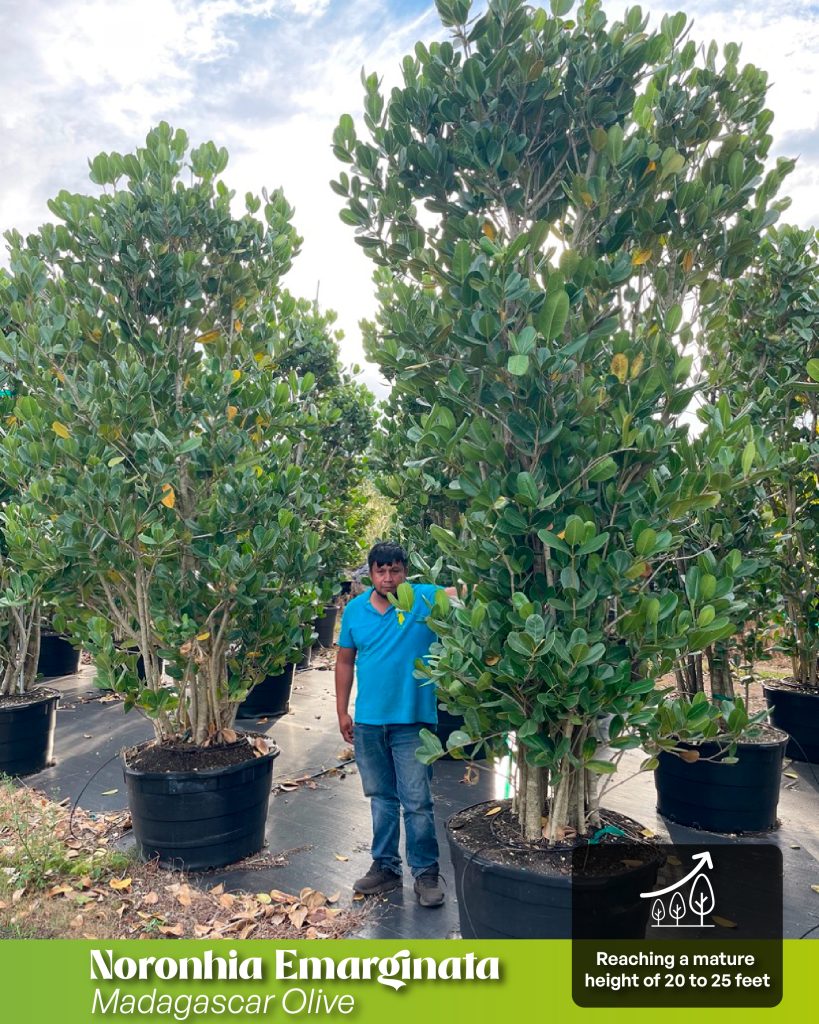
Whether used as a specimen, in hedged groupings, or integrated into xerophytic gardens. Noronhia emarginata adapts easily to different landscape projects. Its upright form and manageable growth habit make it easy to shape with light pruning, supporting both formal and naturalistic approach.
Stepping out of the background: Clusia Rosea (Autograph tree)
With its sculptural form, glossy foliage, and adaptability, it’s proving to be much more than a landscape support act. Whether used as a hedge, a specimen, or trained into unique forms. This resilient tropical deserves a spot in the spotlight especially where bold texture, evergreen presence, and low maintenance are key.
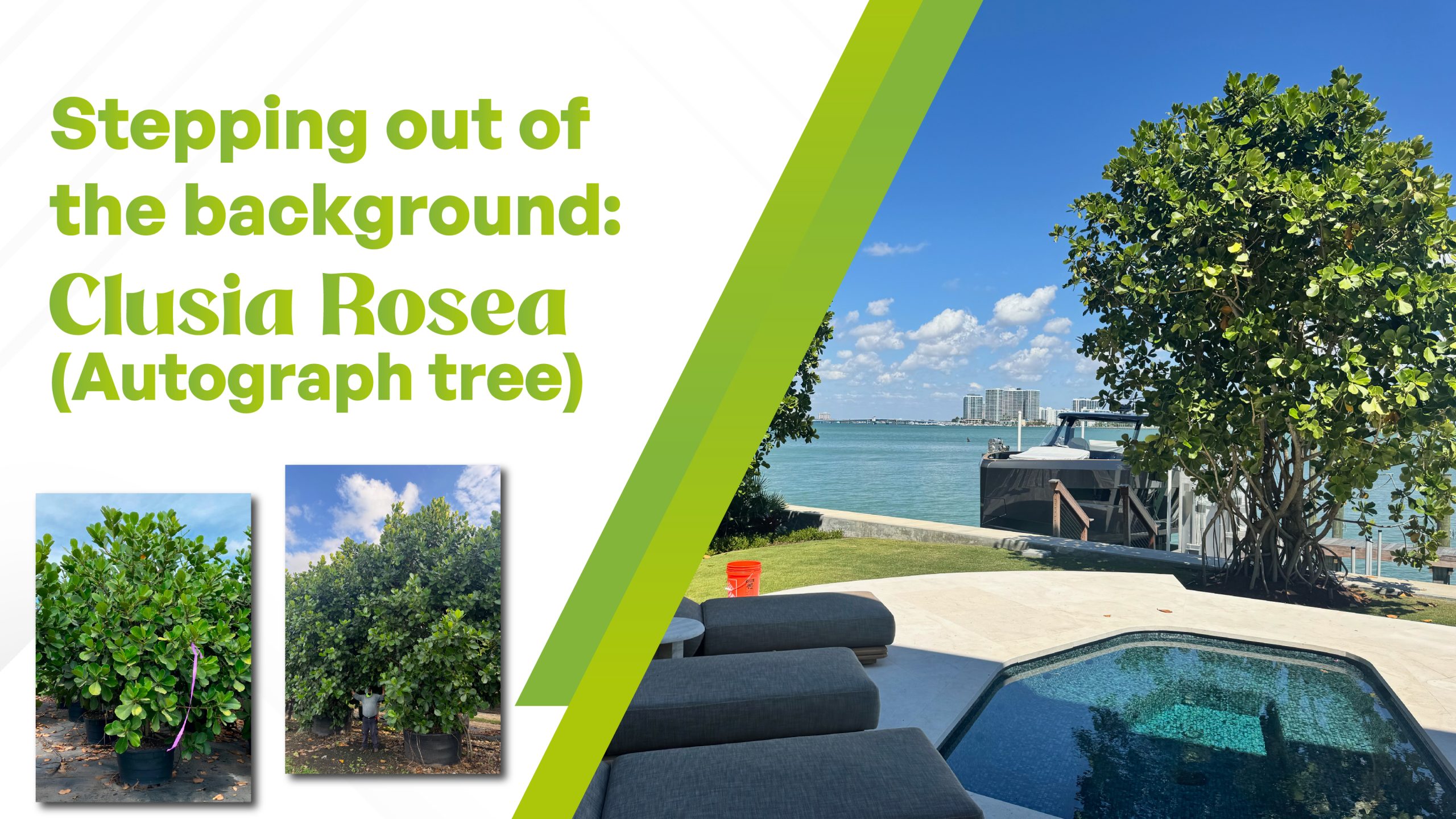
Clusia rosea, commonly known as the autograph tree or pitch apple, is a tropical tree native to the Caribbean and parts of Central America. This tree is often overlooked as just another hedge or filler plant. But it deserves far more attention for its resilience, unique foliage, and versatility in landscape architecture projects.
It’s a small to medium-sized tree that can reach up to 25–30 feet in height. It features thick, leathery, dark green leaves that are obovate, with a glossy surface. The name “autograph tree” comes from the fact that you can etch words into the leaf surface, and they will remain visible as the leaf heals.
Resilience and Beauty
Clusia rosea is tolerant of salt, wind, and drought once established, making it a perfect choice for coastal or urban landscape projects. It can be grown as a hedge, a specimen tree.
Its pink-to-white flowers are waxy and rose-like, opening at night and attracting pollinators such as moths. Though not as fragrant as other tropicals, the blooms offer aesthetic charm and seasonal interest.
With its sculptural form and low-maintenance nature, Clusia rosea deserves a second look in any landscape project. Especially where bold texture and evergreen structure are needed.
Hidden Gem for Landscaping Projects
In the busy world of landscape architecture projects, it’s easy to gravitate toward familiar favorites—but sometimes, the best choices are the ones still waiting to be discovered. There are many trees that offer beauty, resilience, and ecological benefits. Elements that can make all the difference in any landscape project. Whether you’re designing a private garden, a public space, or restoring a native habitat, don’t overlook these underrated landscaping gems.
Contact Us for Unique Trees for Landscape Projects!
At TreeWorld Wholesale, we’re passionate about helping you find the perfect trees to match your vision. Ready to give your landscaping project a fresh perspective?
🌳 Text
us today to learn more about these spotlight-worthy species and explore our full selection of unique, hard-to-find trees.

